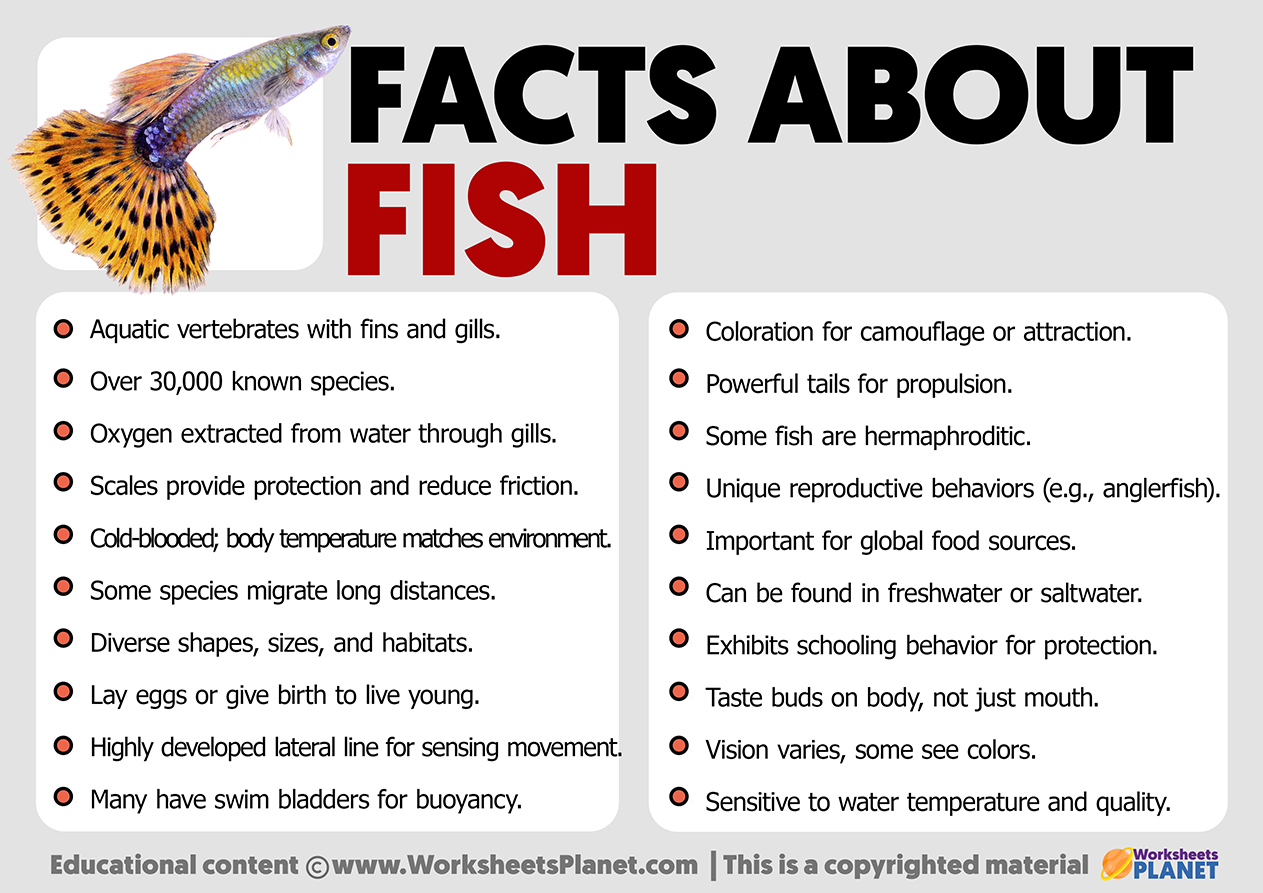Fish are aquatic vertebrates with gills, fins, and streamlined bodies adapted for swimming. They come in diverse species, inhabiting freshwater and saltwater environments worldwide.
Fish exhibit remarkable adaptations, such as scales for protection, lateral lines for sensing movement, and swim bladders for buoyancy control.
They play essential ecological roles as both predators and prey, contributing to aquatic food chains. Fish are also a significant food source for humans, with various species consumed for their nutritional value.

Here you have 20 interesting facts about fish
- Aquatic vertebrates with fins and gills.
- Over 30,000 known species.
- Oxygen extracted from water through gills.
- Scales provide protection and reduce friction.
- Cold-blooded; body temperature matches environment.
- Some species migrate long distances.
- Diverse shapes, sizes, and habitats.
- Lay eggs or give birth to live young.
- Highly developed lateral line for sensing movement.
- Many have swim bladders for buoyancy.
- Coloration for camouflage or attraction.
- Powerful tails for propulsion.
- Some fish are hermaphroditic.
- Unique reproductive behaviors (e.g., anglerfish).
- Important for global food sources.
- Can be found in freshwater or saltwater.
- Exhibits schooling behavior for protection.
- Taste buds on body, not just mouth.
- Vision varies, some see colors.
- Sensitive to water temperature and quality.

